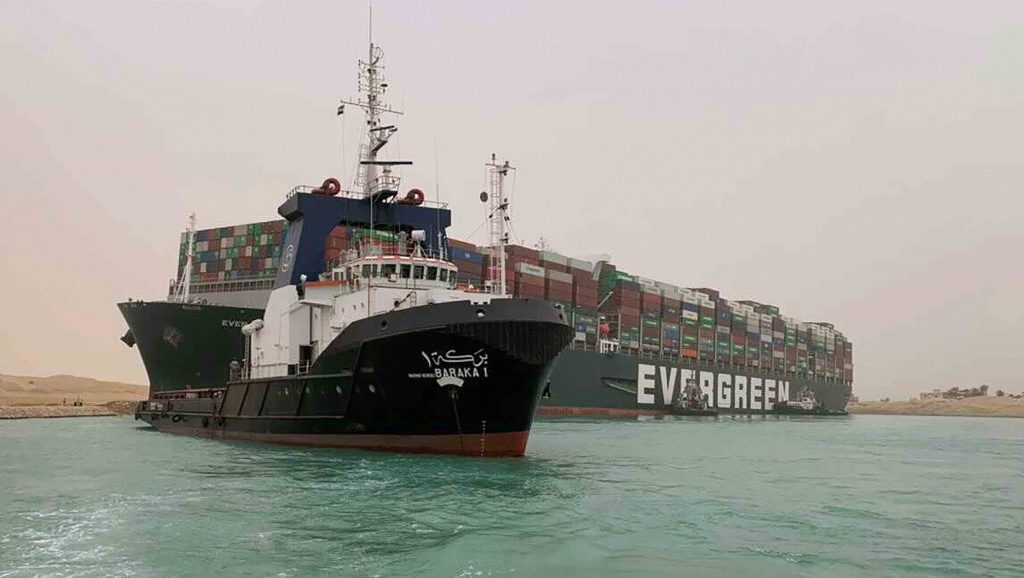Suez (Egypt): The nearly week-long saga to free container ship ‘Ever Given’ finally ended Monday. ‘Ever Given’ was finally freed from the sand and traffic started once again through the Suez Canal. Officials said that operations are expected to return to normal in the next few days. After ‘Ever Given’ got stuck in the Suez Canal, a large number of vessels also had to wait inside the waterway. These vessels carry a large number of items including oil and livestock. The accident was a stark reminder of the fragility of global trade infrastructure and threatened to further strain supply lines already stretched by the pandemic.
Horns sounded in celebration as the container ship – which is longer than the Eiffel Tower and weighs 220,000 tons – limped up the canal. ‘Ever Given’ was finally freed after a painstaking operation which saw teams of tugs and dredgers working day and night.
Salvage teams used the tides and a full moon to pull the ship from deep inside the sandy bank it had smashed into last week. They said they shoveled 30,000 cubic meters (1 million cubic feet) of sand and even removed part of the canal wall.
Part of the problem was a five-day wait for two large tugboats, according to Peter Berdowski, chief executive officer of ‘Boskalis Westminster’, the parent company of the salvage team.
Also read: ‘Ever Given’ finally freed, Suez Canal opens up for traffic once again
“We were enormously helped by the strong tide, the forces of nature that push hard, even harder than the two tugboats can pull,” Bokaliss was quoted as saying by Bloomberg.
“The men were euphoric of course. But there was a tense moment when this giant was floating freely. You need to bring it under control quickly with the tugboats before it gets stuck on the other side. If that happened, we would have gone from bad to worse. Those were a tense 10 minutes,” Bokalis added.
Clearing the queue of vessels may take as long as two-and-a-half days, with canal operations returning to normal within four days, Suez Canal Authority Chairman Osama Rabie said at a Monday evening press conference. The SCA is looking into incentives for vessels in line, he said, without giving details on options being considered.
Egyptian authorities were desperate to get traffic flowing again through the waterway that’s a conduit for about 12 per cent of world trade. Approximately one million barrels of oil pass through the Suez Canal in a day. This has been the canal’s longest closure since it was shut for eight years following the 1967 Six-Day War.
The long-term impact of the canal’s $10-billion-per-day closure will likely be small given that global merchandise trade amounts to $18 trillion a year. Yet so many ships being thrown off schedule will ensure cargo delays for weeks, if not months.
“The dominoes have been toppled,” Lars Jensen, chief executive of ‘SeaIntelligence Consulting’ in Copenhagen said. “The delays and re-routing which have already happened will cause ripple effects which will be felt for several months,” he added.
The blockage held up about $400 million an hour, based on rough calculations from Lloyd’s List that suggested westbound traffic to Europe is worth around $5.1 billion a day and eastbound traffic is approximately $4.5 billion.

